
Erikalinpayne
August 20, 2024
2
Min Read Time

You’re expecting this to be all about brainstorming to increase buy-in, aren’t you? Critiques of brainstorming as ineffective or “the very opposite of synergy” challenge us to take a different approach to choosing a yearbook theme. Try something new this year: ask “What don’t we want in a theme?”
“Oh snap,” said my eighth-grade self.
This could result in something quite powerful: there’s a leadership movement to replace brainstorming with problem-solving strategies inspired by Einstein. Yes, the Theory of Relativity guy. And “problem” in this context isn’t a crisis, it’s more like a mathematical expression: solve for theme.
We have our question: What don’t we want in a yearbook theme? Now, it’s time to find the answers.
Ask why. And do it five times.
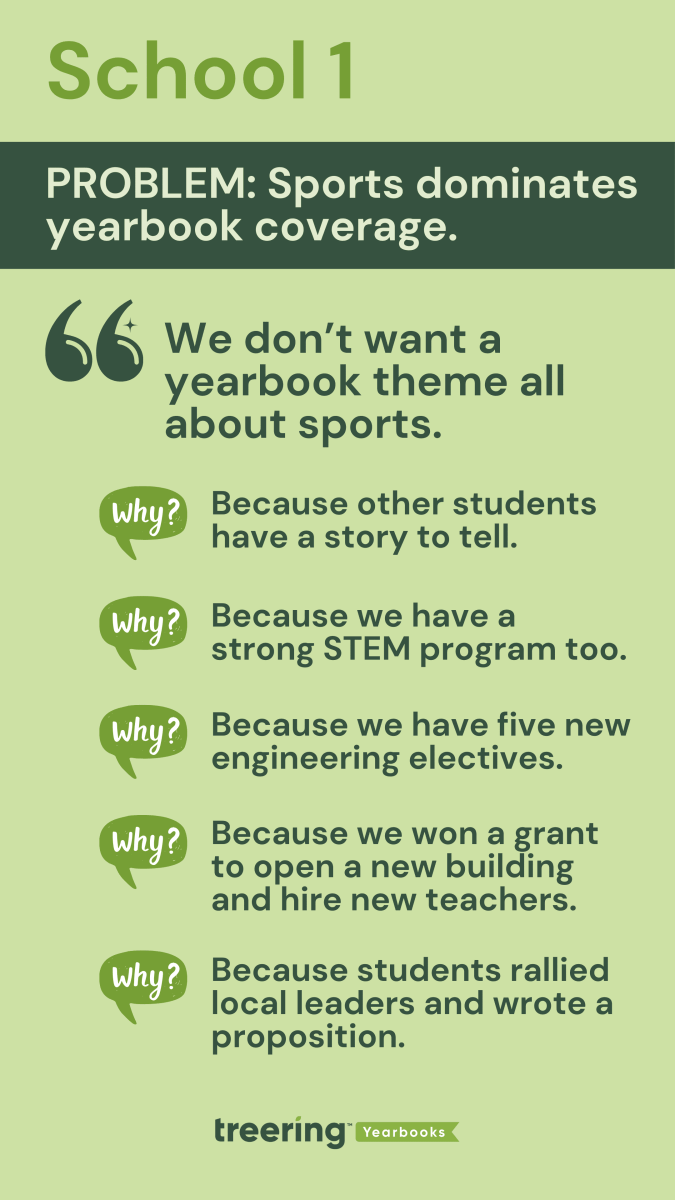
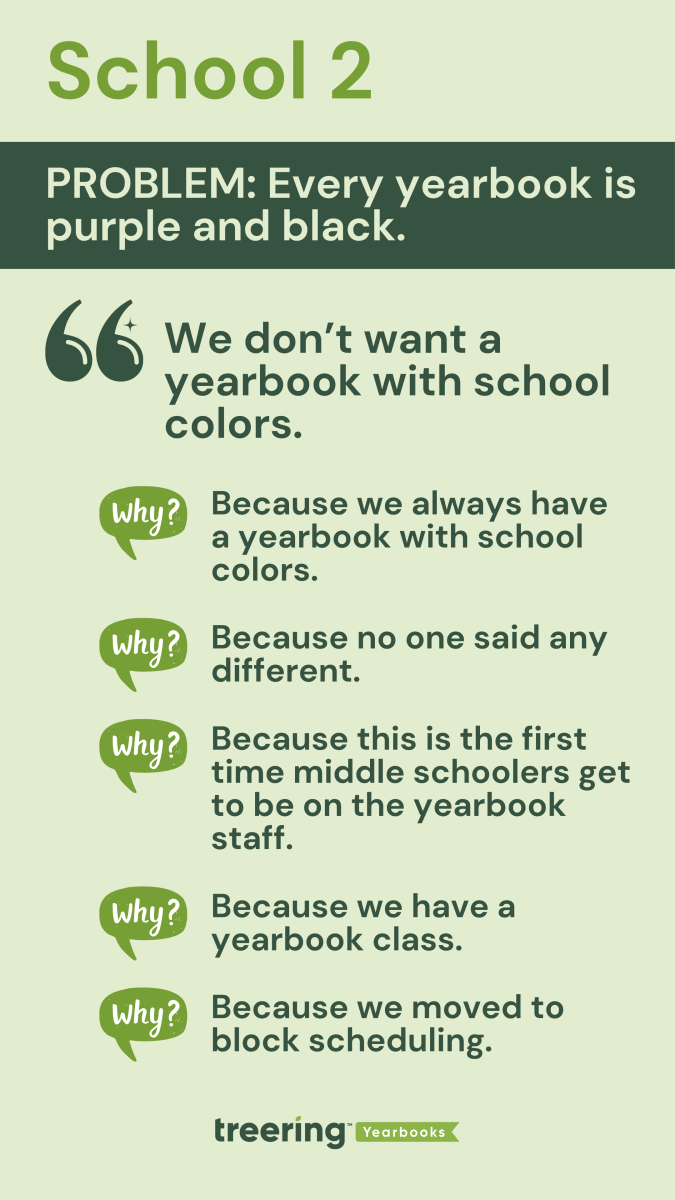
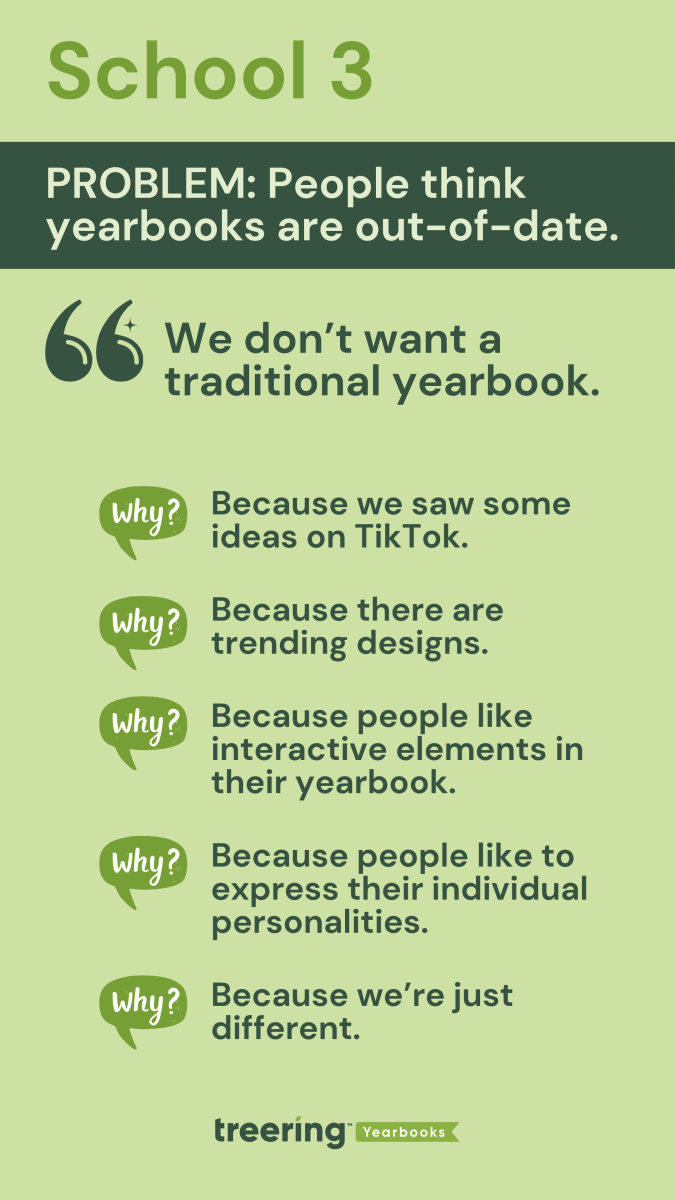
In each of the examples above, students started with their ideas and defined what they wanted to highlight. You may choose to do two or three sets of these to direct your team before narrowing down your theme.
Treering’s nearly 300 themes can provide the visual to align with the story you want to tell (verbal). Here’s what I mean:
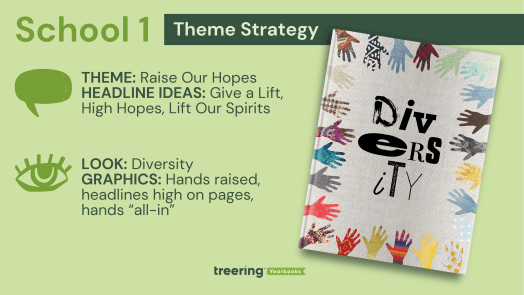
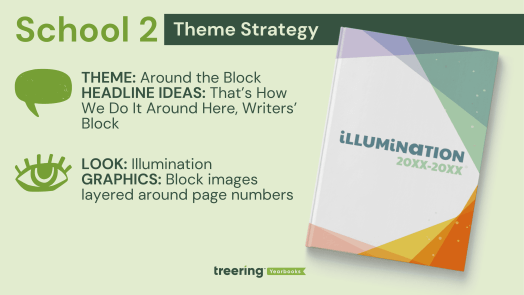
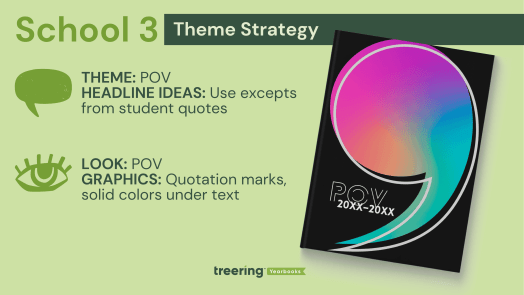
Usually, a red flag is a full-on brake moment. Because we are problem-solving to develop a yearbook theme, let’s add some drama.
A theme that feels relevant only to the current moment might not resonate with readers in the future. If your theme conveys a you-had-to-be-there vibe, consider how it will be perceived years from now. And whether you want your sigma theme to resonate with your grandkids.
I know. I know. After the trendy theme “problems” above, you thought timeless might be the way to go. Timeless themes might be perceived as "safe," which could stifle creativity*. They often rely on classic or traditional designs, which might lead to a yearbook that lacks innovative or fresh elements that can make it distinguishable from previous years’ books. They also might be beacons of a longstanding tradition.
*PSA: That’s not a reason to ignore design hierarchy.
I’m just going to say it: if you have a visual theme and don’t know how to implement it, you don’t have a complete theme. You have a look. So does my mom.
A complete yearbook theme provides that proverbial lens through which the entire school year is viewed. It helps prioritize content that aligns with the central idea, ensuring that the yearbook tells a cohesive story rather than just a collection of unrelated events. Remember our school that chose POV above?
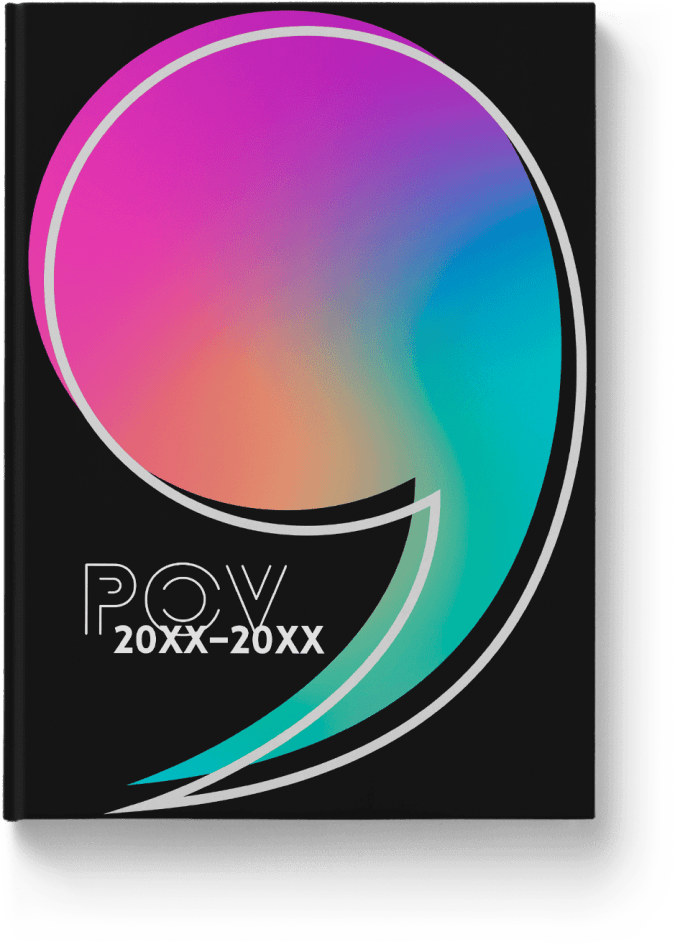
POV is gorgeous. The included layouts focus on student voices and impactful photography, neither of which works if you only feature a subset of students in the book. To truly convey POV, you need multiple perspectives.
If the theme feels out of sync with the school’s identity or geography and/or doesn’t capture the essence of the student body, move on.
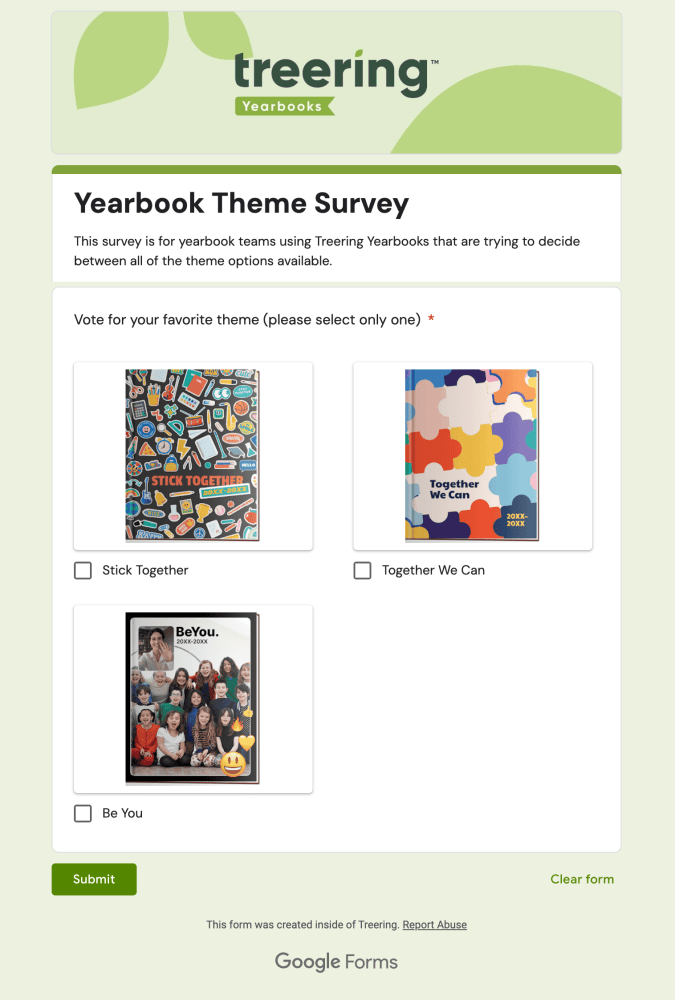
This is when you could involve the student body and get that buy-in we previously discussed. Theme surveys help choose the visual identity of your yearbook theme. Our design team put all of Treering’s themes together so you could pare down the selection. (We suggest five or fewer.)
Throughout the school year, some many events and activities might seem unrelated at first glance. An intentional theme helps tie these events together under a common narrative. Visual elements from fonts to graphics, develop that narrative and provide a cohesive look. After you choose yours, check out these additional theme development resources:
(Then again, if theme brainstorming is your jam, check out these questions in the Theme Module of Treering’s free curriculum. We’re that flexible.)